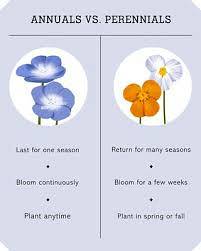You want large drainage holes; an inch in diameter is a good place to start. You can put drainage holes in almost anything by using a drill with the proper bit or a hammer and large nail. Put in as many holes as possible. It's okay if the bottom of your container begins to look like Swiss cheese.
- How big should planter drainage holes be?
- Should large planters have drainage holes?
- What do you put in the bottom of a planter for drainage?
- Should you put rocks at the bottom of a planter?
- What can I use for drainage in a large planter?
- What plants can grow in pots without drainage holes?
- How do you plant holes without drainage?
How big should planter drainage holes be?
In Purdue's bulletin on container gardening (http://www.hort.purdue.edu/ext/HO-200.pdf ), they say: "To provide drainage, drill three or four small (1/4 inch) holes in the bottom of the container. Holes larger than 1/4 inch in diameter will allow too much soil to escape.
Should large planters have drainage holes?
Drainage Holes
Holes in the bottom of the planter are essential for proper drainage. The holes give the excess water an escape route so it doesn't stay in the soil. Many flower pots come with only one drainage hole. Others don't have any holes at all.
What do you put in the bottom of a planter for drainage?
Choose high-quality potting soil that is well draining. And if your plants need even more drainage, instead of putting gravel in the bottom of your pot, try mixing in perlite, PermaTill, or organic matter into your potting soil to increase drainage throughout the pot.
Should you put rocks at the bottom of a planter?
A layer of gravel at the bottom of a planting container was recommended for decades, even in published books about container plants. That erroneous advice may lead to root damage in plants. When gravel is at the bottom of a pot, it takes up room that otherwise soil would fill, making the pot much smaller for its plant.
What can I use for drainage in a large planter?
You can use large pebbles (cleaned), plastic mesh, heavy mulch (wood chips and the like), or special drainage materials available at your garden store. Put enough of whatever you choose to cover the bottom of the pot evenly.
What plants can grow in pots without drainage holes?
13 Amazing Plants That Do Not Need Drainage Holes
- Snake Plant. One of the best indoor plants for beginners, the Snake plant is one of our top choices when it comes to plants that do not require drainage holes. ...
- Oleander Plant. ...
- Chinese Evergreen. ...
- Kupukupu Fern. ...
- Crotons. ...
- Dumbcane. ...
- Schefflera. ...
- Pothos.
How do you plant holes without drainage?
How to Plant in a Pot Without Drainage Holes
- Layer the landscape rocks at the bottom of your vessel of choice, evenly covering the base and filling it about 2-3 inches high.
- For the second layer, sprinkle horticultural charcoal on top of the rocks. ...
- For the third layer, start by filling with potting soil about half way up the vessel.
 Planetagarden
Planetagarden



